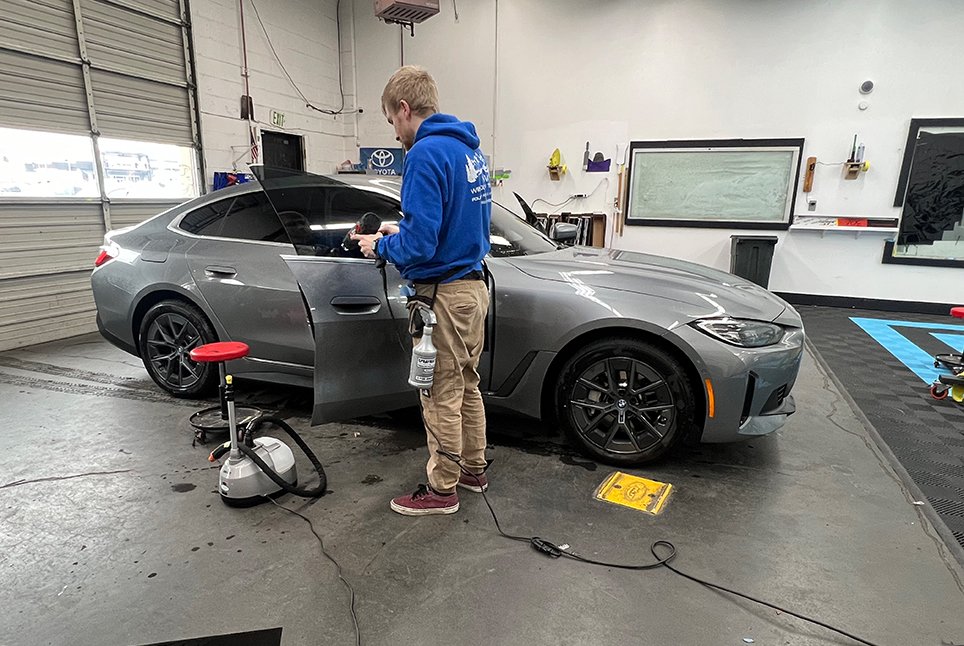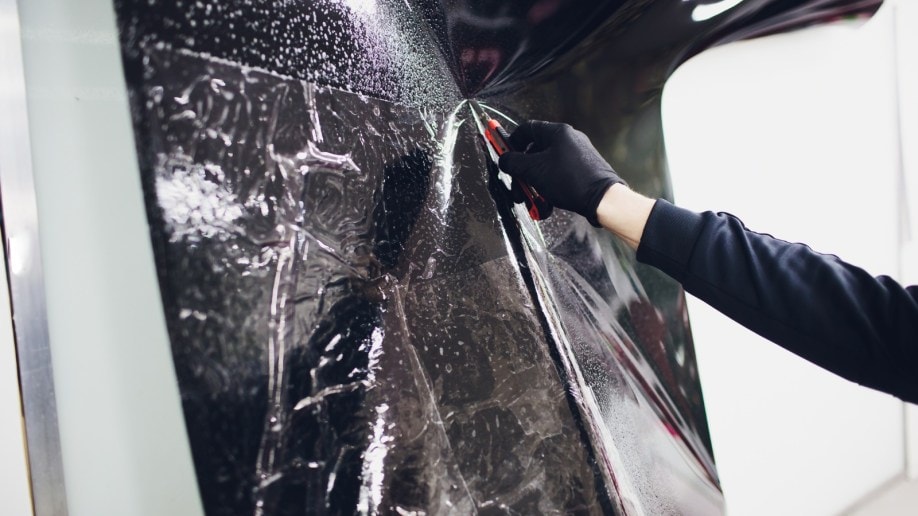Auto Window Tinting: A Guide to Picking the Perfect Shade
Auto Window Tinting: A Guide to Picking the Perfect Shade
Blog Article
Home Window Tinting Regulations and Guidelines: What You Required to Know Prior To Tinting Your Auto
Prior to waging window tinting for your lorry, it is vital to familiarize yourself with the diverse legislations and guidelines that govern this method across various states. These regulations determine the acceptable levels of tint darkness, typically measured by noticeable light transmission (VLT) portions, and include certain stipulations for front windshields targeted at making certain roadway safety and security. Additionally, certain territories might use clinical exceptions for people with certifying conditions. Understanding these intricacies can save you from prospective legal implications, however what are the specific regulations in your state?
Review of Home Window Tinting Laws
Window tinting legislations are frequently based on variation throughout various territories, showing neighborhood policies and safety and security considerations. These laws determine the allowable degrees of tint darkness and reflectiveness on vehicle windows, ensuring that drivers maintain adequate visibility while also protecting versus dangerous UV rays and warmth.
The majority of guidelines classify window tinting based upon the Visible Light Transmission (VLT) percentage, which shows the quantity of light that can go through the home window. Usually, lower VLT percents indicate darker tints. Regulations commonly differentiate between the front, side, and rear windows, with more stringent limitations related to the front windscreen to improve security for both the driver and other roadway users.
Conformity with home window tinting guidelines is essential, as violations can result in fines, necessary removal of the tint, and prospective rises in insurance coverage premiums. It is necessary for vehicle owners to familiarize themselves with regional laws before proceeding with window tinting setups.
State-by-State Color Laws
Understanding the particular window tinting policies in each state is vital for vehicle proprietors seeking to adhere to the legislation. Each state in the U.S. has developed its own collection of rules controling home window tinting, which can differ substantially. These regulations often dictate the allowable levels of color darkness, the kinds of home windows that can be tinted, and any clinical exceptions that might use.
For instance, states like California have strict limitations on color darkness for front windows, while others, such as New Mexico, may enable darker tints. Furthermore, specific states mandate certain visibility portions for different home windows, consisting of the windscreen, front side windows, and back windows. It is critical for car owners to familiarize themselves with their state's laws to prevent potential fines or charges.
Furthermore, some states might call for a qualification sticker label to be positioned on colored windows, suggesting conformity with state laws. Failure to adhere to these laws not just runs the risk of lawful repercussions however can likewise affect security and visibility while driving. Lorry proprietors should perform detailed study or speak with neighborhood authorities to make certain complete understanding and conformity with state-by-state color regulations.
Allowed Color Kinds and levels
Numerous lorry proprietors might be shocked to discover that permitted color degrees and kinds vary widely across different states. Each state has established its own policies regarding the permitted darkness and reflectivity of home window color, typically determined by Visible Light Transmission (VLT) percents. VLT refers to the quantity of light that can go through the colored home windows; thus, a lower percentage shows a darker tint.

In addition, the types of color products enabled can differ, with some states forbiding mirror-like or metallic coatings. It is essential for lorry proprietors to acquaint themselves with their state's certain regulations to make certain compliance. Non-compliance can cause fines, required removal of the tint, or various other legal effects, making it crucial to recognize these laws before waging installment.
Medical Exceptions for Tinting
While not all states provide allocations for medical exemptions right here regarding home window tinting, those that do recognize the requirement for specific people to improve presence and comfort because of medical conditions. Various clinical conditions, such as lupus, skin cancer, and certain eye conditions, can provide individuals specifically sensitive to sunshine. Subsequently, these individuals may call for darker tints to secure themselves from hazardous UV rays and glow.

It is essential to note that despite a medical exemption, there may still be constraints on the degree of color permitted. Compliance with state regulations ensures that people are both protected and within legal restrictions. Those thinking about medical exceptions must call their local Department of Motor Vehicles or equal authority to comprehend the needs and procedures necessary to get an exception efficiently.
Penalties for Non-Compliance
Stopping working to follow home window tinting regulations can bring about substantial penalties, which vary by state. Regulation enforcement companies are encouraged to release citations for automobiles that do not follow the defined tinting regulations. These fines typically include penalties, which can vary from small amounts to a number of hundred bucks, depending on the intensity of the infraction and the read this post here state concerned.
In some jurisdictions, duplicated offenses may lead to escalating penalties or added charges, such as compulsory court looks. Moreover, non-compliance may necessitate the elimination of unlawful tinting, usually at the proprietor's expenditure. In extreme instances, regular offenders might face suspension of their lorry registration up until compliance is attained.
In addition, insurance coverage ramifications may occur from obtaining several citations for home window color offenses. Insurance providers might watch such infractions as a sign of riskier behavior, potentially bring about increased costs or trouble in insurance coverage.
To stay clear of these penalties, it is important for automobile proprietors to acquaint themselves with their local window tinting legislations and guarantee that their automobile complies (Window Tinting). This positive approach not only avoids lawful ramifications yet additionally advertises road security
Verdict

A lot of guidelines identify home window tinting based on the Visible Light Transmission (VLT) portion, which shows the quantity of light that can pass through the window. Conformity with home window tinting guidelines is vital, as violations can result in fines, mandatory elimination of the tint, and possible boosts in insurance coverage premiums.Recognizing the specific home window tinting guidelines in each state is important for lorry owners looking for to comply with the legislation. These policies usually determine the allowable levels of color darkness, the types of home windows that can be tinted, and any medical exemptions Get More Info that might use.
For instance, states like The golden state have rigid limitations on color darkness for front home windows, while others, such as New Mexico, might permit darker colors.
Report this page